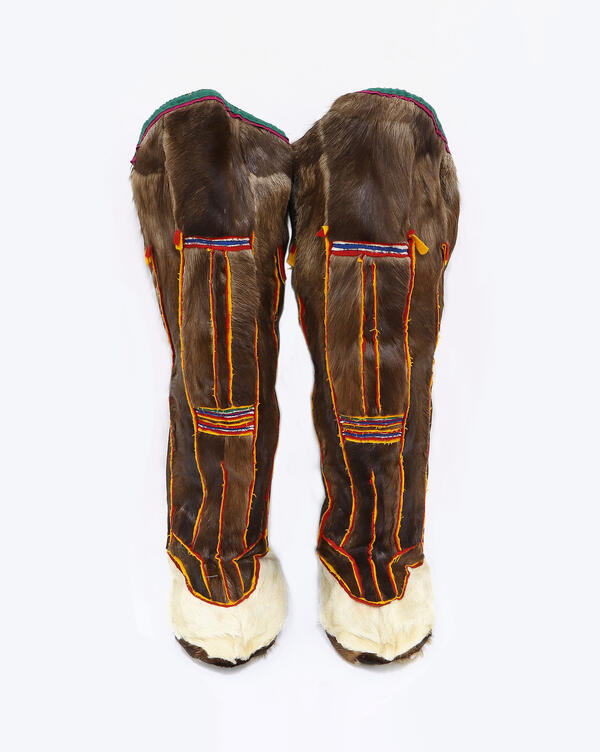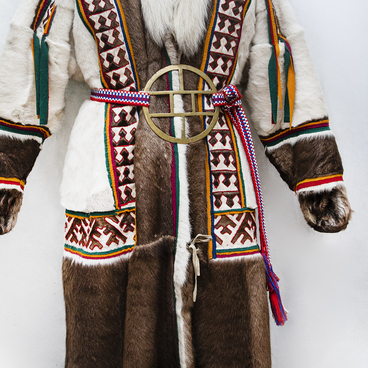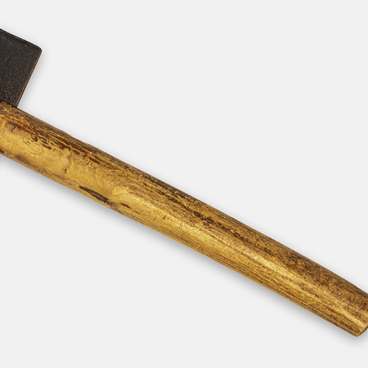Pimy are traditional Nenets boots sewn by hand according to ancient techniques. They consist of two layers. The inner one is a stocking with fur inside. It is made of the hide of a two-month-old calf. The outer one is sewn from kamus — a piece of hide from the lower leg of a deer.
Nenets women pay special attention to making men’s footwear because a reindeer herder spends most of the day outdoors — working, herding, hunting, and fishing. In the harsh climate of the North, he must always keep his feet warm and comfortable.
To make boots, reindeer hides are carefully processed: soaked, dried, stretched, and dipped. They are then matched by color — it takes about ten pieces of hide to make a pair of men’s boots. The soles for men’s pimy are made from pieces of hide around a reindeer’s hooves. They are also lined with stiff hides from deer foreheads, with the pile placed opposite the moving direction so that the wearer does not slip while climbing.
The seams of the pimy are made inside, on the fur. The pimy are sewn using reindeer tendons or purchased strong threads. Nenets pimy are decorated in the front with horizontal strips of fur, with narrow stripes of red, blue, and green cloth between them. On men’s pimy, the decorative patterns are usually placed below the knee, because men’s clothes are shorter than women’s.
Men’s boots are decorated using basic patterns known since ancient times. They are called “deer tracks”, “man’s head”, “bear’s ears”, and “moose horns”. The latter is the most masculine, expressive, and majestic one. To decorate the boots, women fold the white and dark fur with the pile inside, and after cutting, sew it from the wrong side and turn it out.
Men’s pimy are attached to the rings on the belt of
fur pants using special straps and are also tied below the knee with cords
woven from dyed wool. Nenets wear pimy boots for an average of five to seven
years, and each man owns two or three pairs of boots at any one time. A man is
also supposed to have a pair of beautiful pimy boots for going out which he can
use throughout his life. The owner may hand down his boots to his descendants
or wish to take them with him into the Lower World — to the afterlife.




